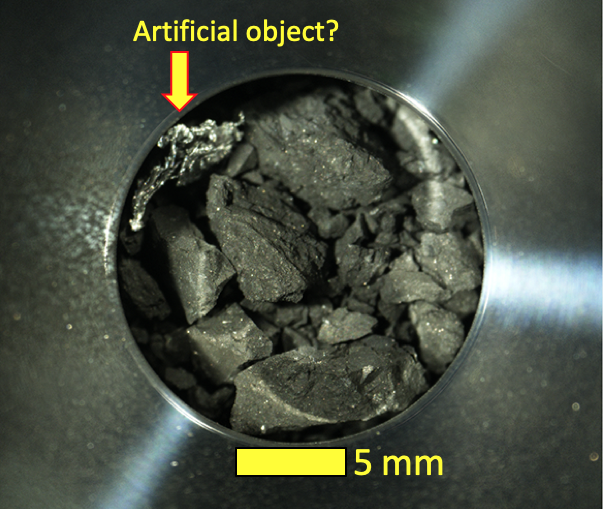It’s rare that gravel gets scientists so excited, but these are no ordinary rocks. They’re the samples returned to Earth by Hayabusa2 after its 5.24-billion-km round trip to asteroid Ryugu, and this is our first glimpse at them after the spacecraft landed in the Australian Outback on December 6 and its sample container was transported to Japan.
The images were taken after the first sample chamber, chamber A, was opened on December 15 to reveal material collected from Hayabusa2’s first touchdown on Ryugu that took place in February 2019. This sample was collected from the surface of the asteroid and contained many black-colored pebbles larger than 1 mm.
To collect a sub-surface sample, in April 2015 Hayabusa2 deployed the Small Carry-on Impactor (SCI) device, which was equipped with a plastic explosive charge that detonated on impact to create an artificial crater around 10 m (33 ft) in diameter on the asteroid. The exposed material was then collected in July 2019.
These sub-surface samples are revealed in the images of chamber C and contain many more larger particles than were collected from Ryugu’s surface, some as large as around 1 cm (0.4 in) across. All up, the samples tip the scales at around 5.4 g, which is substantially greater than the 0.1 g required for initial scientific analysis that the mission was targeting.
Images of chamber C also show an “artificial object” that the team suspects is aluminum that separated from the sampler during collection.

JAXA
With the samples now in their possession, JAXA scientists will get down to the business of studying them. Unlike Itokawa, which is an S-type, or siliceous, asteroid from which samples were returned to Earth by the previous Hayabusa probe in 2010, Ryugu is a C-type, or carbonaceous, asteroid that is expected to reveal more about the interplay between minerals, water and organic matter in the primitive solar system, and therefore shed more light on the origin of Earth, the oceans, and life.
But Hayabusa2’s asteroid encounters aren’t over yet. Its mission has been extended and, after dropping off the Ryugu samples, the probe is on its way for a flyby of fast rotating micro asteroid 2001 CC21 in July 2026, before continuing on its way to rendezvous with asteroid 1998 KY in July 2031, conducting observations of exoplanets and swinging-by Earth along the way, in December 2027 and June 2028.
Source: JAXA
Source of Article